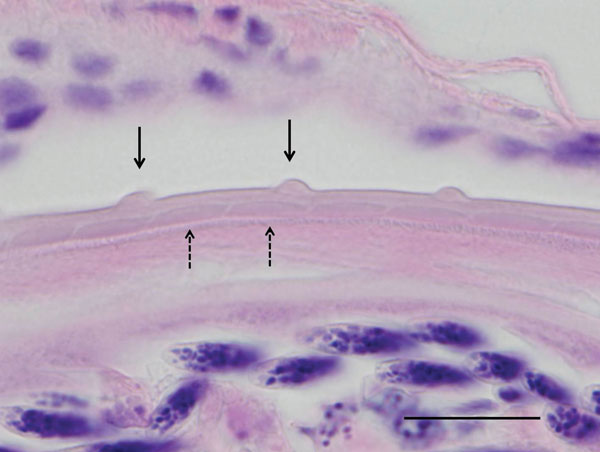Volume 22, Number 8—August 2016
Dispatch
Onchocerca lupi Nematodes in Dogs Exported from the United States into Canada
Figure 1

Figure 1. Histologic section of the eye of a dog infected with Onchocerca lupi nematodes, Summerside, Prince Edward Island, Canada. The typical O. lupi nematode cuticular pattern is shown, with 2 inner transverse striae (dashed arrows) within the interval between 2 outer cuticular ridges (solid arrows). Hematoxylin and eosin stain, original magnification ×100. Scale bar indicates 20 μm.
1Current affiliation: University of Georgia College of Veterinary Medicine, Athens, Georgia, USA.
Page created: July 15, 2016
Page updated: July 15, 2016
Page reviewed: July 15, 2016
The conclusions, findings, and opinions expressed by authors contributing to this journal do not necessarily reflect the official position of the U.S. Department of Health and Human Services, the Public Health Service, the Centers for Disease Control and Prevention, or the authors' affiliated institutions. Use of trade names is for identification only and does not imply endorsement by any of the groups named above.